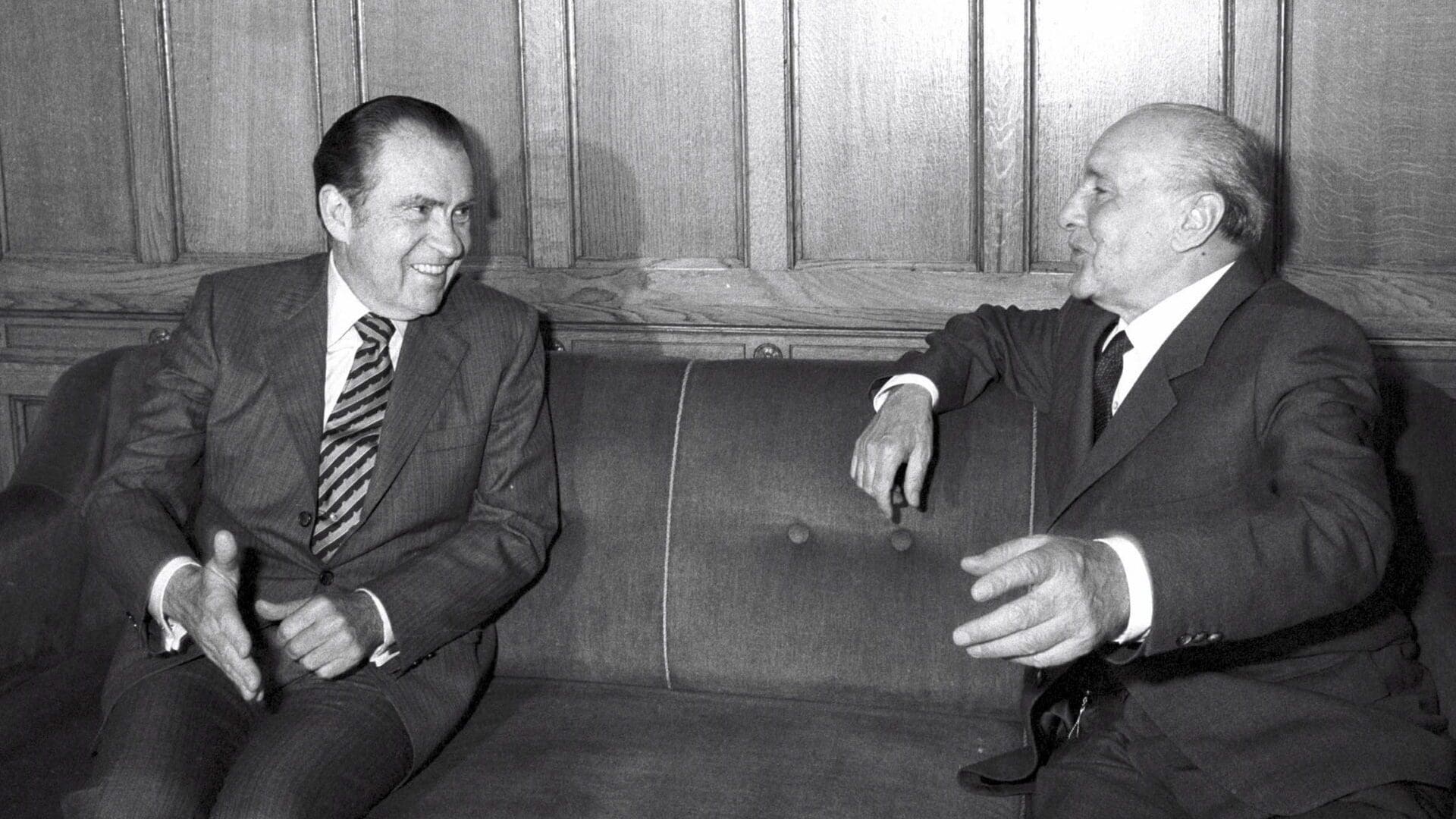Hungary’s Workers’ Party ran a petition in 2001 to erect a monument to János Kádár (Hungary’s communist dictator between 1956–1988), saluting his memory. The petition received surprisingly high approval and endorsement from the public—79 per cent of the viewers who phoned the TV2 show that discussed the petition agreed that Kádár deserves a statue. Later in 2019, an opinion poll by the Hungarian Nézőpont Intézet found that János Kádár continues to enjoy quiet a positive image—44 per cent of Hungarians have a rather positive, and only 38 per cent a rather negative view of him. Kádár died on July 6, 1989, and was buried on July 14, 1989. Marking the anniversary of these dates, it is worth delving into the reasons for the Hungarian dictator’s persistent popularity.
Goulash Communism and the Ruins Behind the Façade
Just about a year ago Tibor Szanyi, a Hungarian politician and former member of the Hungarian Socialist Party (MSZP, successor of the state socialist-era Hungarian Socialist Workers’ Party) eloquently articulated the causes for nostalgia about the pre-1989 regime:
‘The era marked by the name of János Kádár was the first time in Hungarian history when working people were able to break out of the captivity of poverty, misery, and hopelessness, and came to have clear perspectives…János Kádár provided the Hungarian people with much more than any of his predecessors or successors. Millions gained access to decent food, housing, doctors, and schools.’
Indeed, the nostalgia towards the state socialist era is usually connected to the social safety net that characterised the regime. State housing programmes, the eradication of illiteracy, lifting people out of poverty, and the introduction of the pension system are those positive mantras nostalgic Central-Eastern Europeans associate state socialism with. While it is true that property ownership and education became more widely available during the Kádár era, it does not imply that these signs of welfare became available due to Kádár’s regime.
It is far from obvious that ‘state socialism’ was the factor that led to the abolishment of illiteracy, mass-built houses, and expanded welfare among the wider population. In many Western countries (from the United States, which had a small welfare state to France, which had a relatively large welfare state) the general prosperity of the population did increase between World War II and 1989 even more than in Hungary. Therefore,
it was not state socialism that necessarily resulted in general welfare, rather, it was modernisation.
Modernisation took place in countries that did not have state socialism either, thereby, ‘congratulating’ communism for these achievements, or feeling nostalgia for it because of them, is misguided. It is the general advancement of mankind driven by technological development and modernisation that brought about the betterment in living standards, not the regimes and state ideology of the Eastern Bloc.
When doubling down on some of the so-called ‘achievements of the Kádár era’, the cracks in the system become even more vividly visible.
Albeit it is true that many children coming from disadvantaged socio-economic backgrounds got access to education, usually, it came at the expense of disadvantaging others.
Young people from ‘undesirable social classes’ (such as churchgoers and members of the former elite classes) were regularly barred from attending university
or were forced to spend years working before getting accepted to university. Thereby, the idea of ‘education for the poor’ did not mean ‘education for all’—the system simply gave privileges on different grounds than the capitalist regimes in modern Western societies did.
There is a similar issue with the idealised notion of ‘zero unemployment’ under state socialism. While it is true that, for some people, it provided a safety net they would not have had access to under a capitalist regime, arguably, it did more harm than good. Instead of being fired from unprofitable jobs and given the opportunity to look for some better opportunities where the workers could better realise their talents, people were stuck behind the desk for a lifetime in jobs that were highly ineffective. The job market was stiff, and the lack of agility hindered development and progress. The overall rigidity of the pre-planned economic system impeded innovation and imposed a complex, highly bureaucratic regime on the national economy.
Any remaining illusions about the socialist regime’s idealised panel buildings, fridges, cars, holidays by the Lake Balaton, and zero unemployment can be broken by the revelation that
much of that welfare spending was financed from debt that the country was forced to repay after the curtain fell.
Little of the welfare spending of the Kádár era was financed by the real economic development of the country, most expenses were covered by loans borrowed from Western countries. Between 1973 and 1989, Hungary’s gross public debt increased tenfold, from $2 billion to $20 billion. In relation to the Hungarian GDP, sovereign debt increased from nine per cent to 67 per cent of the GDP. The borrowed money was not invested into real economic growth either, but was wasted on maintaining the façade of a socialist welfare paradise. It was the later generations of Hungarians who had to work to repay that debt.
1975 – Kádár János az MSZMP XI. kongresszusán (részlet) – János Kádár on the XI. Congress of MSZMP
English below ↓] “Arra törekszünk, hogy társadalmunk közszellemét illetően is a munka társadalma legyen, a végzett munka értéke szerint osszon erkölcsi és anyagi elismerést.” Az MSZMP XI. kongresszusa 1975-ben meghirdette a „fejlett szocializmus” időszakát és az 1990-es évekre az életszínvonal folyamatos növelését, az ipar és a mezőgazdaság termelésének minimum megkétszereződését tűzték ki célul.
The Memory of a ‘Soft’ Dictator
Kádár’s positive image is also in part due to a little trick people’s memory likes to play about history—the closer in time a historic episode is, the better it is remembered. Therefore, it is more influential in shaping our perception.
Directly after the Revolution of 1956, Kádár’s regime was highly repressive and brutal on the freedom fighters.
Hundreds of people were executed (including the young martyr Péter Mansfeld who was hanged eleven days after his 18th birthday), and thousands were imprisoned. Then, as a means of avoiding widespread discontent, and thereby preventing future uprisings, Kádár’s regime was careful to allow people some benefits. Since this welfare socialist part of the Kádár era is closer to today’s Hungarians in time than the repressive period between 1957–61, it plays a larger role in shaping people’s perception of the man.
The fact that not only national collective memory, but family memory also remains from this period further contributes to the Kádár era’s nostalgic image. Today’s youth’s family memory of the Kádár era is their parents’ childhood with all its Beatles music, Abba, and denim jeans, giving the false image of Hungary being the ‘happiest barrack’ instead of a dictatorship.








